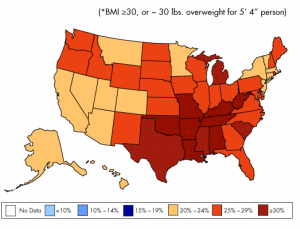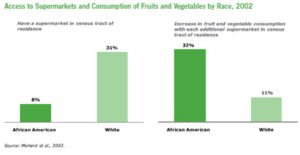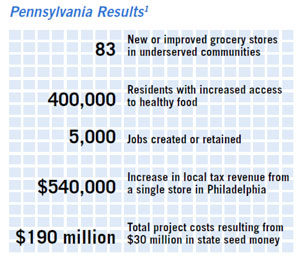There are 23.5 million Americans living in designated food deserts (USDA, 2009). An alarming 25 percent of Cincinnati’s population lives in a food desert. This just doesn’t mean that people aren’t eating as healthily as they could. Those living in affected areas experience higher rates of obesity and diet-related illnesses.
In fact if current trends continue, 1 in 3 U.S. adults will have diabetes by 2050.


The Cost of Obesity Is High
Obesity in Cincinnati
More than 23.5 million Americans do not have access to a grocery store within one mile of their homes and must spend significantly more time traveling to a grocery store.
Cincinnati falls well below average when it comes to the availability of supermarkets. To meet the national average of 24-34 grocery stores within one mile of all of its residents, the region would need 10 more supermarkets at a minimum.
The Grocery Gap

What is the Fresh Food Financing Initiative?
One solution growing in popularity is the Fresh Food Financing Initiative. It proposes public-private partnerships that would fund a $120 million financing program. This program will provide grants and loans to supermarkets and grocery stores. (“Top 15 Innovations in American Government”– Harvard University’s Kennedy School of Government, 2009)
Benefits of a Financing Program

The good news is that progress is being made, and The Health Gap is a driving force behind the change with it’s Do Right!® Corner Store initiative.
Do Right!® Produce and School Markets: The community can purchase $5 family-sized bags of produce every other Friday with recipes. Contact us to find out how you can help!
“Inside Cincinnati” features Renee Mahaffey Harris (Executive Director of the Health Gap) and Wendell Young (Cincinnati City Council Member). They discuss health disparities and food deserts in our communities. Courtesy of CitiCable.